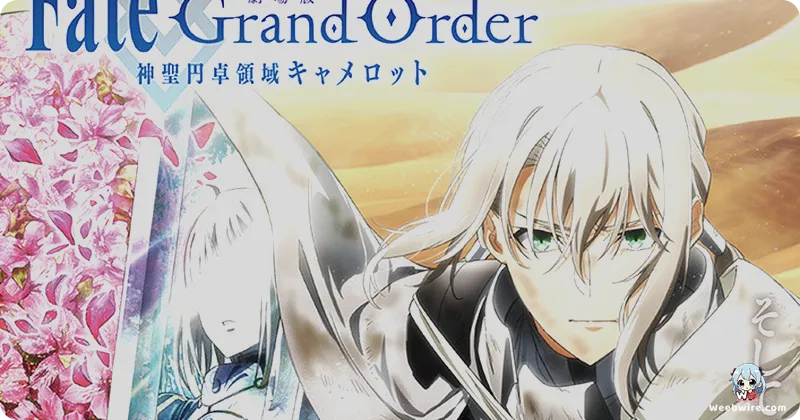Clash of Concepts: Unpacking the Critical Lore and Production Triumph Behind Fate/Grand Order's Paladin; Agateram

The cinematic adaptation of the Sixth Singularity, Divine Realm of the Round Table: Camelot, culminates in the breathtaking second installment, Paladin; Agateram. While the initial film, Wandering; Agateram, meticulously laid the groundwork, it is the sequel that delivers the dramatic, high-stakes climax anticipated by fans of the Fate/Grand Order saga. Beyond the dazzling spectacle and devastating clashes, this arc is rich with intricate lore and fascinating production details that elevate it far beyond a standard anime adaptation, showcasing the immense depth of Kinoko Nasu's mythological world and the rigorous effort involved in visualizing its challenges.
The Divinity of the Lion King
A cornerstone of the Camelot Singularity’s tragedy is the identity of the chief adversary, the Lion King. This figure is not merely an alternate iteration of Artoria Pendragon; she represents a profound metaphysical transformation. The key insight into her distorted moral code and immense power lies in her choice of armament: the Holy Lance Rhongomyniad. Unlike the traditional Saber class, who wields Excalibur, the Lion King's lance is a conceptual anchor, functioning as a divine construct that tethers reality to the 'reverse side' of the world. Lore dictates that sustained utilization of this cosmic weapon fundamentally alters Artoria, stripping her of human empathy and converting her into an immutable divine spirit. Her mission to enforce a rigid, emotionless salvation upon humanity springs directly from this god-like state. This vital narrative distinction transforms the conflict into a poignant battle against an absolute concept of divinity rather than a conventionally flawed monarch.
Production I.G’s Impact on Action Sequencing
The quality jump in Paladin; Agateram is also a matter of noteworthy production trivia, stemming from a crucial studio transition. Production I.G, celebrated for action epics such as Ghost in the Shell and Haikyuu!!, assumed control from Signal.MD for the final film. This shift resulted in a marked enhancement of visual fidelity and dynamic action sequencing. Internal production notes reveal that the animation teams deliberately emphasized the weight and brutality of the final engagements between the Knights of the Round Table. Sequences featuring Lancelot (Saber) and Gawain, in particular, were choreographed to feel less like typical Servant duels and more like desperate, high-impact brawls between heavily armored warriors. The investment in complex rotational movements and detailed impact physics underscores Production I.G’s resolve to make this conclusion an unforgettable visual milestone.

Bedivere: The Emotional Core of the Singularity
Furthermore, the character of Bedivere serves as the emotional bedrock and true driving force of the Sixth Singularity. His unique narrative status is rooted in a timeline paradox; he is a version of the knight who failed centuries ago to fulfill his vow to return Excalibur to the Lady of the Lake, forcing him to wander. His silver arm, a distinctive visual element, is a conceptual prosthetic gifted by the mage Merlin. This arm is crucial, as it allows him to momentarily channel the immense power of Excalibur, enabling the heroic, self-sacrificial act required to confront the Lion King. Granting a seemingly secondary figure from Arthurian mythology such a central and complex role highlights the commitment to deep character exploration characteristic of the Fate universe, transforming a loyal attendant into a tragic figure whose sacrifice is paramount to the survival of reality.
Geopolitical Nuance in the 1273 A.D. Setting
The setting itself adds another layer of complexity. Situated in 1273 A.D., the Singularity geographically incorporates the presence of the Egyptian pharaoh Ozymandias and Queen Nitocris. This inclusion is deliberate, establishing a dynamic geopolitical ecosystem. Ozymandias's colossal 'Great Temple Complex of Ramesseum' operates as a powerful, neutral third party. His calculated decision to remain detached from the Lion King/Chaldea conflict, intervening only to protect his domain, showcases the intricate political maneuvering Chaldea was forced to undertake. This nuanced backdrop elevates the Camelot Singularity far beyond a simple good-versus-evil confrontation, positioning it as a sophisticated military and mythological campaign. Finally, the elite voice cast, featuring talents like Mamoru Miyano (Bedivere) and Takahiro Mizushima (Gawain), ensured the emotional gravitas of the tragedy was conveyed with maximum impact, solidifying Paladin; Agateram as a monumental success in anime adaptation.
Credits
Fate/Grand Order Divine Realm of the Round Table: Camelot - Paladin; Agateram
Author
Kinoko Nasu (Original Scenario)
Cover Art
Takashi Takeuchi (Original Character Design)
Studio
Production I.G
Publisher
Aniplex / Type-Moon
Producers





